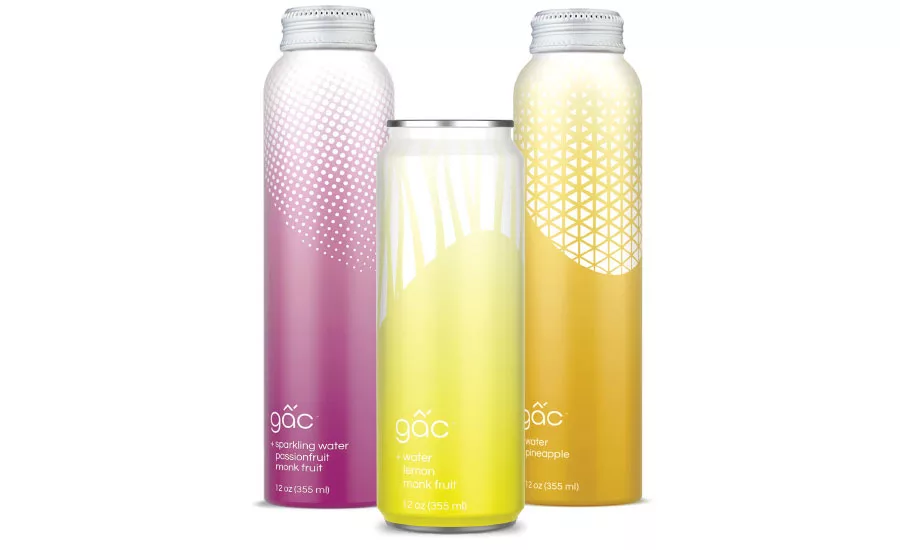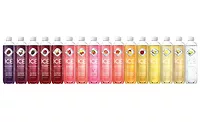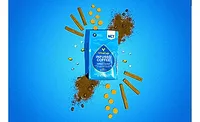Berry flavonoids, antioxidants boost immunity
Product developers infusing more products with antioxidants

In the 1997 rock song “A Change Will Do You Good,” multi-Grammy award-winning artist Sheryl Crow sings about the importance of change. With an increased emphasis on health and wellness, the vibe in the beverage industry also speaks to the importance of “changing it up” by manufacturing products with functional ingredients, including the immune-boosting power of antioxidants.
John Sauve, vice present of marketing at Artemis International, Fort Wayne, Ind., notes the widespread “antioxidant acceptance” permeating the market. “When a beverage brand like Bai brings the science-based world of antioxidants and free radicals to the retail and consumer forefront … and then gets Justin Timberlake in the game, you know there is something going on.
“The macro trend, one that makes the difference, is the consumer’s growing trust, understanding and acceptance of the need for antioxidants in their daily lives, led by a few really big marketers who continue to penetrate the market with ‘all things antioxidant,” he continues. “The connection of fruits (mostly berry flavonoids) and the ‘very active’ antioxidants story is now two decades old since the wild blueberry industry introduced the USDA/ORAC assay results on antioxidant capacity onto the scene in 1997 — a milestone marketing event for building the awareness and interest in antioxidants.”
Thomas J. Payne, industry specialist to the U.S. Highbush Blueberry Council, San Mateo, Calif., notes the emphasis on natural, wholesome ingredients plus health and wellness, which has had a favorable impact on blueberry beverage development.
“Consumers equate blueberries with antioxidant power and consequently readily accept them as an ingredient in almost any product,” Payne says. “There is always a lot of interest in blueberries as the antioxidant superfruit, especially since blueberries are often referred to as the original superfruit.
“Not only do blueberries have an all-American association, [but] as a native American fruit, they are an excellent choice for product developers who want to project a responsible carbon footprint,” he continues.
Blueberries and fruit in general have a positive image among consumers who consider fruit an almost-guiltless “right choice,” Payne adds. “Blueberries appeal to the fastidiously health conscious as well as to unapologetic pleasure-seekers,” he says. “With their fruity burst in the mouth flavor and healthy profile, blueberries give products lush taste, broad appeal and clean labels.”
Kevin Kilcoyne, vice president and general manager of Welch’s Global Ingredients Group, Concord, Mass., suggests there are two ways to make an antioxidant-rich beverage: add functional ingredients to a base formulation, or use a superfruit juice with polyphenols as the base to provide health-related benefits.
“The first option might be cheaper, but can present challenges in terms of maintaining a clean label,” Kilcoyne explains. “The second option is usually the more natural approach but it can present hurdles in terms of flavor, with many popular superfruit juices presenting significant taste challenges. That’s before you even consider the high cost of most superfruit juices.”
As a solution, Kicoyne suggests using a superfruit juice that’s rich in polyphenol antioxidants, that tastes great, but won’t break the bank. He also points to science-backed research behind Concord grape juice.
“Research has shown that Concord grape juice delivers more healthy polyphenols per serving than most other popular superfruit juices,” he says. “In one study, Concord grape juice was found to have a polyphenolic concentration of 2.6 mg GAE/ml. By contrast, blueberry juice has 2.3 mg, acai and black cherry juices each had 2.1 mg, which cranberry juice had 1.7 mg. Only pomegranate juice outperformed Concord grape juice with 3.8 mg.”
Defend to the end
According to Webster’s dictionary, antioxidants are “substances that oppose oxidation or inhibit reactions promoted by oxygen or peroxides.” Simply put, antioxidants contained within beverages or food defend the body against cell-damaging, unstable molecules known as free radicals and stop the destructive process of oxidation, says Randy Kreienbrink, vice president of marketing for BI, Rancho Dominguez, Calif.
“The ongoing clean-label evolution continues in the beverage space,” he says. “Raw, fresh, natural, organic and non GMO [are] all trends pushing for botanicals to be used in beverages.”
Kreienbrink lists several ingredients containing phytochemicals, antioxidants and natural vitamins and minerals that might help the body ward off the common cold and aid in cancer prevention. These include guayusa, green tea, guarana, kola nut, turmeric, yerba mate, tamarind, hibiscus, rose hips, passion flower, acai, blueberry, cranberry, papaya, faba bean, pumpkin seed, acerola, chi and quinoa.
Due to consumer demand, beverage-makers are adding these natural ingredients in a variety of ready-to-drink juices, teas, carbonated soft drinks, waters and more.
New products and ingredients continue to burst onto the scene. For instance, GacLife LLC offers gấc, a line of health and beauty waters, which uses the vibrantly-colored, orange-reddish superfruit found in indigenous Southeast Asia, in 12-ounce slim cans in six flavors: Lemon, Pineapple, Peach, Sparkling Mango, Sparkling Lemon and Sparkling Passionfruit. Each can contains 20 mg of natural carotenoids from pure gấc juice, 15 calories and 2 grams of sugar in each bottle, the company says.
Known as the “fruit from heaven,” gấc fruit contains high level of carotenoids, an antioxidant that contains 70 times more lycopene than tomatoes, 75 times more vitamin A than leafy greens and 10 times more beta-carotene than carrots, it says.
Bai, a wholly owned subsidiary of Keurig Dr Pepper, Burlington, Mass., and Plano, Texas, offers Bai Antioxidant Infusion, a line with 10 flavors that contain fruit flavors and antioxidants. One of the brand's main sources for antioxidants comes from the coffee fruit used in its beverages.
Adam Cooper, vice president of marketing for Los Angeles-based The Wonderful Co., notes that antioxidants are inherently present in POM Wonderful 100% Pomegranate Juice. Two whole pomegranates with nothing else added are used in each 8-ounce bottle, he says.
“Our research has revealed that consumers of POM Wonderful 100% Pomegranate Juice often turn to the beverage after experiencing a health awakening — a moment in time that makes them reassess their health choice,” Cooper says. “Once learning about the benefits of drinking POM Wonderful, consumers incorporate the beverage into their lifestyle, which has been a significant driver to our growth.”
Despite the decline in the overall juice and juice drinks market, POM Wonderful and its super-premium 48-ounce 100% Pomegranate Juice saw sales increase 7 percent during the 52 weeks ending Aug. 17, 2018, he adds.
Berry to bottle
In addition to pomegranates, Melanie Bush, chief science officer at Artemis International, says ingredient suppliers would be hard-pressed to find any Top 10 list that doesn’t include berries as natural antioxidant sources.
“The red-purple color pigments of berries, called anthocyanins, are naturally potent antioxidant compounds that are linked to the health benefits of berries,” Bush says. “The darker the berry, the higher the anthocyanin content, and therefore, the higher the antioxidant capacity.
“Berries like black elderberry and aroniaberry sit at the top of the list of natural antioxidant powerhouses,” she continues. “Recent science has reinforced the strong link between systemic inflammation and oxidative stress, with an imbalance of the two markers a key player in most disease states raging from cognitive impairment to cardiovascular disease to a stressed immune system and even cancer. Studies have shown that the flavonoid compounds in berries, including anthocyanins, can effectively modulate these imbalances, positively impacting multiple areas of health.”
In addition to providing potent antioxidants, red-purple anthocyanin color pigments provide a natural colorant, which eliminates the need for other natural or artificial colors, Bush adds.
When formulating with antioxidants, Bush notes that the anthocyanin color pigments in their natural state might cause an astringent flavor profile. However, she suggests this can easily be corrected by adding a sweetening agent. She also advises that clear or yellow beverages as well as certain milk-based/yogurt drinks would not be the best fit for utilizing anthocyanins in the red-purple range.
Welch’s Kilcoyne also notes the drawbacks of formulating with on-trend wellness ingredients like antioxidants, polyphenols and adaptogens. “It’s a dilemma that many nutrition companies will recognize and understand,” he says. “Traditionally, a common way to address this problem has been to use added flavors, masking agents or sugar, or a combination of these.
“However, such ingredients can compromise the integrity of a product in terms of its clean-label status and health profile,” he continues. “A convenient solution is to formulate a nutrient-rich beverage using a 100 percent fruit juice that will offer a flavor that is bold enough to disguise any unpleasant notes, but which will also be a good fit for the overall product concept.”
As consumers continue to seek healthier options in what they eat and drink, The Wonderful Co.’s Cooper highlights that antioxidants are being sought by 72 percent of baby boomers, 73 percent of Gen-Xers and 66 percent of millennials.
“The antioxidant profile of POM Wonderful 100% Pomegranate Juice is a key product differentiator,” Cooper says. “Research on the many potential benefits of polyphenols is ongoing and still emerging. We expect that as the effect of these antioxidants on the body are better understood and known to the general public, more individuals will turns to foods and beverages that naturally offer these benefits.”
Artemis’ Sauve agrees: “The fabulous world of berry flavonoids will become remarkably active in the research arena as scientist (and health-based companies) keep searching for the evidence and the pathways by which flavonoids perform their magic in the human body,” he says. “That will likely take a while. In the meantime, the body of knowledge and evidence surrounding these fabulous flavonoids … will help fortify and amplify the nutrient and phytonutrient richness of products that ‘do good things’ to our bodies.” BI
Looking for a reprint of this article?
From high-res PDFs to custom plaques, order your copy today!





